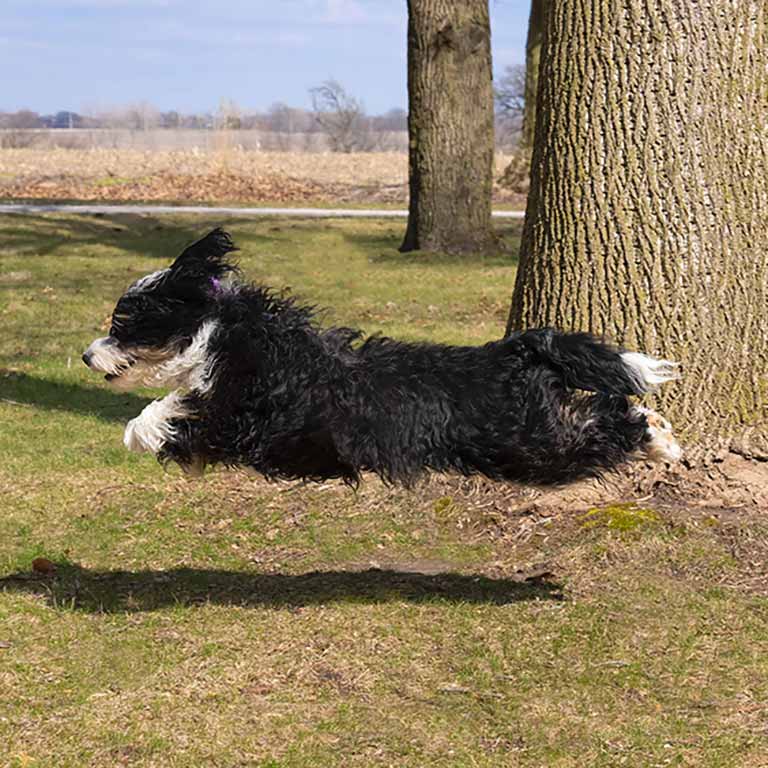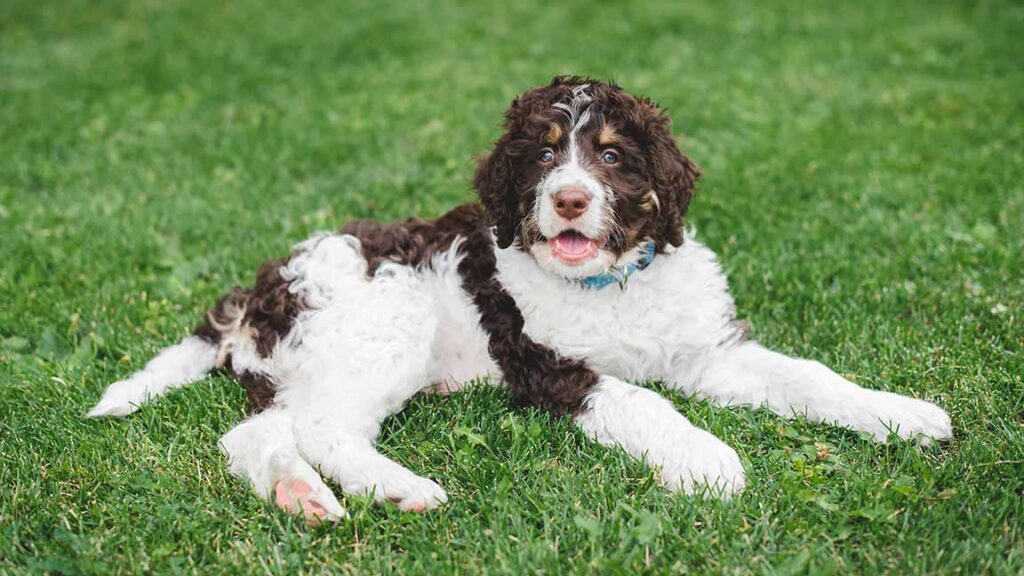I still remember the day we brought home our first Bernedoodle puppy. Those big brown eyes looking up at me, his tail wagging so hard his whole back end swayed. Three years and countless chewed shoes later, I can honestly say training this brilliant, goofy fluffball has been one of the most rewarding challenges of my life.
If you’re reading this, you probably know what I’m talking about. There’s just something special about these dogs, isn’t there?
Here at Love Berners, we’re passionate about these incredible dogs and believe in doing things the right way. Before sharing training tips, we want you to know that we’re committed to ethical breeding practices – comprehensive health testing, careful temperament selection, and raising puppies in a loving home environment. Our dedication to the breed goes beyond just producing cute puppies; we’re focused on creating healthy, happy companions for families. It’s this foundation of care that shapes how we approach training, too.
Whether you’re currently knee-deep in puppy pads or wondering why your adult Bernedoodle still thinks socks are chew toys, I’ve been there. Let me share what I’ve learned along the way—the victories, the face-palm moments, and everything in between.
What Makes These Doofuses So Special (and Sometimes Challenging)
Bernedoodles are a beautiful contradiction. Thanks to their Poodle lineage, they’ll sometimes make you wonder if they’re secretly solving calculus problems when you’re not looking. That intelligence means they pick up commands lightning-fast.
But then there’s that Bernese Mountain Dog side that brings both unwavering loyalty and occasional stubborn streaks that make you question everything.
Creating Your Routine (Or: How to Convince Your Dog You Actually Know What You’re Doing)

Listen, the first few weeks might be rough. My kitchen calendar during puppy days looked like a military operation schedule:
- 6 AM: Potty break
- 6:15 AM: Morning kibble
- 6:45 AM: Potty break again
- 7 AM: Play time
- 8 AM: Nap time (for both of us, let’s be honest
Overkill? Maybe. But Bernedoodles crave structure like I crave coffee. They want to know what’s happening and when. Give them that predictability, and they’ll reward you with faster training progress.
The Way to Their Heart (Spoiler: It’s Through Their Stomach)
Positive reinforcement isn’t just a buzzy training term—it’s your secret weapon. When your Bernedoodle does something right, celebrate like they just discovered the cure for cancer. Make a fool of yourself with praise. Be generous with high-value treats.
I once did a happy dance in the middle of our neighborhood park when one of my pups finally mastered “come” during distraction training. Did my neighbors think I was crazy? Absolutely. Did it work? You bet.
Basics First, Advanced Degrees Later
Before dreaming about therapy dog certification or agility championships, nail down these essentials:
- Sit
- Down
- Come (when called, not when they feel like it)
- Stay (even when a squirrel runs by)
- Leave it (probably the command I use most often)
Training sessions should be short and sweet. Think of your dog’s attention span like a phone battery—it starts at 100% and drains quickly. Five minutes of focused training beats 30 minutes of frustration any day.
The Potty Training Chronicles

Can we talk about house training? Because if you’re in the thick of it, I feel you.
Crate training was our lifesaver. Despite looking at me like I was committing a crime every time I put them in, my pups quickly learned that the crate meant cozy nap time, not punishment.
The keys to potty training success:
- Take them out WAY more often than seems necessary
- Throw a mini celebration when they do their business outside
- Invest in a good enzyme cleaner (trust me on this one)
- Remember that accidents happen to the best of us
By about 5 months, we were accident-free. There was that one incident during a thunderstorm at 7 months, but we don’t talk about that.
Meeting the World (Without Freaking Out)
If there’s one thing you could never do too much of, it’s early socialization. Bernedoodles can tend toward being a bit reserved with strangers—it’s that Bernese influence.
I made flashcards of socialization experiences and kept them on my fridge:
- ✓ Meet a person with a hat
- ✓ Hear vacuum cleaner
- ✓ See a bicycle
- ✓ Meet a friendly dog
- ✓ Visit pet store
- ✓ Hear children playing
Each new positive experience builds their confidence. And a confident Bernedoodle is a joy to behold.
Those Special Bernedoodle “Features”

The Zoomies
The first time my first Bernedoodle got the zoomies, I thought he’d been possessed. Running laps around the coffee table, bouncing off the couch, making that weird grunting noise they do.
Now, I recognize the pre-zoomie look in his eyes and either direct him outside or grab my phone to record the chaos. Either way, I’ve learned to laugh through it.
The Mouthiness
Bernedoodle puppies can be nippy. Their default setting is “must put everything in mouth immediately.” A consistent “ouch!” and briefly withdrawing attention worked wonders for us.
The Velcro Dog Syndrome
These dogs do NOT like being alone. From day one, practice short departures. I started by just walking to the mailbox and built up from there. A frozen Kong toy stuffed with peanut butter buys precious minutes of distraction.
Beyond the Basics: Having Fun with Training
Once you’ve mastered the essentials, the real fun begins. Bernedoodles have the brainpower for impressive tricks:
- How to “clean up” toys into a basket
- Bring me specific items by name
- Ring a bell to go outside
- “Find” hidden treats when I hide them
These mental challenges are as important as physical exercise. A bored Bernedoodle becomes a creative Bernedoodle, and their creativity usually involves your belongings.

Your Questions, Answered
My puppy ignores me when distracted. Help!
Welcome to the club! Start practicing recalls in progressively more distracting environments. Always use your highest value treats for this work.
Are professional training classes worth it?
For us, puppy kindergarten was as much about ME learning as it was about Moose. Plus, the socialization was invaluable. If it fits your budget, do it.
How do I stop my Bernedoodle from jumping on guests?
Consistency is key. Every person who enters must follow the same protocol: no attention until all four paws are on the floor. It takes village-level commitment, but it works.
My adult dog still pulls on leash. Is it too late?
Nope! Try the “be a tree” method—stop walking the instant tension hits the leash. It might make your daily walk look like a strange start-stop dance for a while, but they’ll get it.
The Heart of It All
Training isn’t just about having a well-behaved dog (though that’s a nice perk). It’s about communication—building a language between you and this amazing creature who wants nothing more than to understand and connect with you.
Good luck with your Bernedoodle journey. The road might be muddy sometimes (especially after rainy walks), but I promise you, it’s worth every step.


